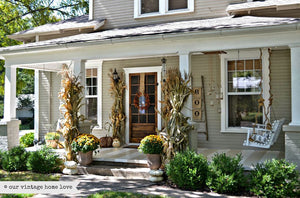Garden And Landscape Ideas

Planning A Wild Flower Garden
When designing your own wildflower garden, the objective is to evoke an impression of at least one of the three main types of natural wildflower gardens: woodland, meadow, or prairie.
To achieve this, try to use plants that are native to your state or local area. You will also need to choose the location with which to place your wildflower garden. Depending on the type of garden you choose, almost any spot is ideal for growing wildflowers. Create a lovely meadow or prairie in an open field. Use an existing woodline as a backdrop for a natural woodland garden. Perhaps your ideal location is too small to accommodate all of your favorite wildflowers. If this is the case, you may want to consider trying a container garden. Whatever the choice, keep in mind that there are numerous books available to help get you started.
Woodland gardens are mostly composed of flowering plants, grasses, shrubs, and trees. Woodland wildflowers, such as the crested iris and creeping phlox, usually grow and bloom in early spring; while other late-blooming plants like asters and goldenrods provide abundant foliage early in the year. When designing a woodland garden, include layers of plants as they would be found in their natural setting. Woodland plants like moist, humus-rich soil that is usually found in shady areas. These plants develop sturdy, evergreen leaves in order to survive the continuous shade.
The native wildflowers become accustomed to and adapt well to the low-light levels year-round. You can easily create a woodland wildflower garden by planting smaller trees, shrubs, hostas, native ferns, and wildflowers such as mountain anemone; bleeding heart; wild ginger; and hepatica underneath a large shade tree in your yard.
In a meadow garden, wildflowers bloom sporadically throughout the season filling them with brilliant colors and astounding fragrances. Native meadow wildflowers produce flowers mainly during the summer and fall seasons. Most meadows contain both grasses and wildflowers. Generally, meadow wildflowers can survive in thin, poor-to-average soil. Commonly found wildflowers may include the following: black-eyed Susans, butterfly weed, lilies, asters, coneflowers, liatris, blanket flowers, and joe-pye weed.
When planting a meadow wildflower garden, you will need to decide how closely you want to imitate nature by studying the surrounding natural meadows in your area. The meadow garden is reasonably easy to care for once established. Giving your garden an annual mowing to keep woody plants at bay should suffice.
Prairie wildflower gardens tend to mix vivid flower colors with the overwhelming greens and golds of native prairie grasses. A natural
prairie is nothing more than open grassland. Throughout the growing season, wildflowers will bloom and add beauty to this low, cushion-like environment while the numerous grasses provide an abundance of foliage. Prairie plants need deep, loamy soil. You can convert a treeless area of lawn into a prairie by planting an array of grasses such as prairie dropseed, switchgrass, or Indian grass along with wildflowers that may include prairie clover; goldenrod; bluebells; butterfly weed; and prairie onion. Keeping this area clear of woody growth is essential in order for these prairie grasses and wildflowers to thrive.
Another easy way to grow wildflowers is in containers. There are a wide variety of containers available to choose from. The only factor to consider when growing wildflowers by this method is good drainage. You will also want to bear in mind that choosing pots that are porous, such as those made of clay, will require frequent watering. Some good choices for container growing are sweet alyssum, baby’s breath, coreopsis, poppies, purple coneflowers, and black-eyed Susan’s.
Wildflowers can also adapt easily to rock garden environments. These can be created for sun or partial shade and for dry or moist conditions. Prairie phlox, blue-eyed grass, bottle gentian, and wild columbine are just some of the many varieties that work well with rock gardens.
Wildflowers spread naturally and are normally more trouble-free and easier to maintain than other garden flowers. They are self-sufficient and can basically get by on their own. Wildflower gardens are also usually less expensive and generally easier to prepare. All that is actually required is the removal of non-essential, existing growth. However; to succeed with wildflower gardening, you should learn about the native environments of plants you want to grow as well as those indigenous to your local area. You will certainly want to avoid any aggressive wildflowers with which will overtake your garden. Before starting your wildflower garden, you should take into account the native plants with which may already be located on your property. The availability of light is also important. This can determine the difference between a meadow and prairie garden
Before starting your wildflower garden, you should take into account the native plants with which may already be located on your property. The availability of light is also important. This can determine the difference between a meadow and prairie garden verses a woodland garden. Different plants require or tolerate different degrees of shade or light. There are numerous gardening books available that provide guidelines for various species. When creating designs with wildflowers, be sure to use plants that bloom at various intervals.
This will create a longer flowering season. Mix a number of different heights, shapes, and textures to give your wildflower garden depth. Include plants with attractive and colorful foliage, such as ferns and ornamental grasses, to keep your garden looking charming during particular times of the year when there may not be a lot of flowers in bloom.
- Tags: Landscape Ideas
- Jill Henry





